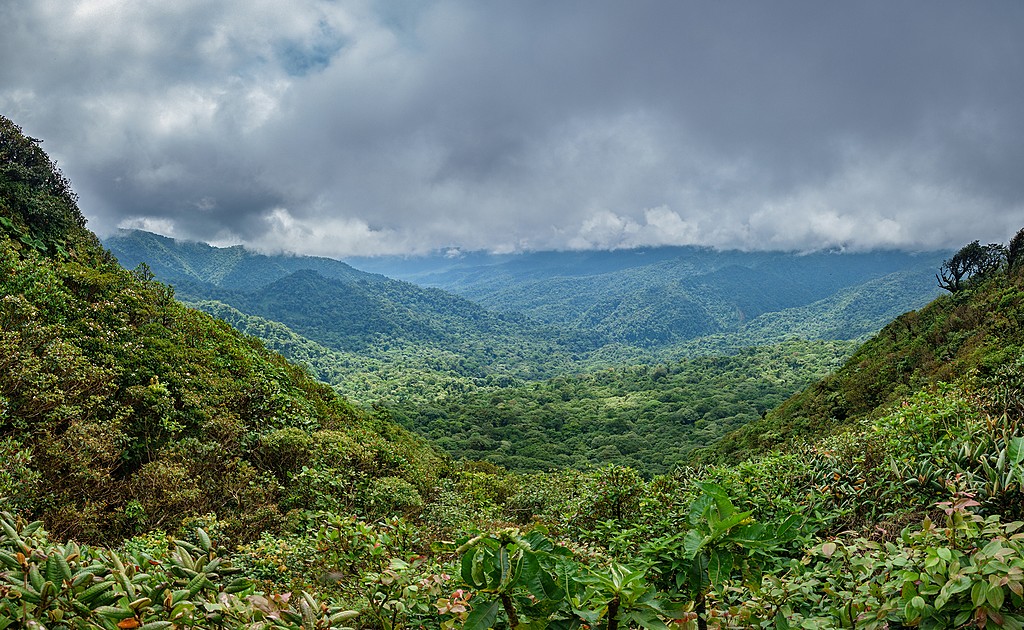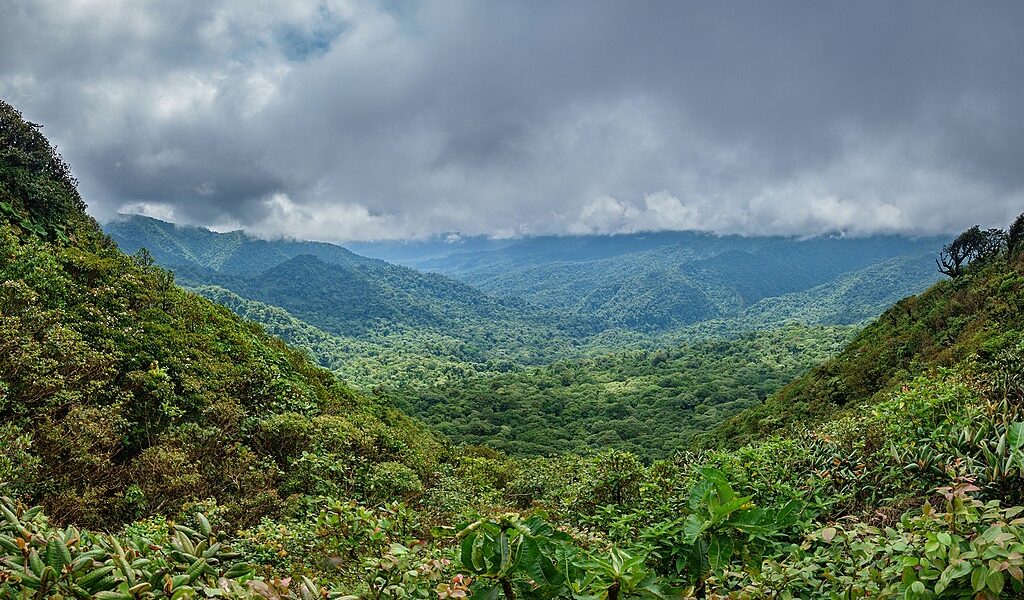
With epic surf, rainforest eco-adventures, romantic getaways, and more, only one question remains: when should you go to Costa Rica? The dry months are certainly popular with tourists, but the rainy season can be a great time to go—think beaches all to yourself, cooler temps, brilliant vegetation, and lower prices. Maximize your travels with these tips on where and when to go during Costa Rica’s “green season.”
## Discovering the Lush Beauty of Costa Rica: Embracing the Green Season
Costa Rica, a jewel nestled in the heart of Central America, owes its balmy tropical climate to its proximity to the equator. This unique geographical position gifts the country with a distinct seasonal rhythm, marked not by the traditional four seasons, but by two primary phases: the dry season and the rainy season. The dry season, a period of sun-drenched days and clear skies, typically spans from mid-November through April, drawing visitors seeking respite from colder climates. However, the rainy season, stretching from May to mid-November, is more aptly named the “green” season, a time when the landscapes of Costa Rica burst forth in a symphony of verdant hues, a testament to the life-giving rains.
Many travelers, drawn by the promise of consistent sunshine, tend to flock to Costa Rica during the dry season. The peak of this tourist influx typically occurs in December, with steady streams of visitors continuing throughout January and February. Furthermore, many North Americans find Costa Rica an ideal destination for a rejuvenating escape during their spring break holidays. However, a secret remains largely undiscovered by these sun-seeking tourists: the green season, far from being a period of constant downpour, is a long and varied stretch of time, presenting a unique and rewarding travel experience. The weather patterns during these months are surprisingly diverse, shifting not only from week to week but also from region to region. In certain areas of Costa Rica, the distinction between the dry and green seasons is almost imperceptible, offering pleasant conditions year-round.
Consider this your comprehensive guide to unlocking the magic of Costa Rica during its often-misunderstood “off” season. But the planning shouldn’t stop here. Once you’ve decided on the ideal time for your visit, delve deeper into the intricacies of trip planning and consider how many days will allow you to truly immerse yourself in all that Costa Rica has to offer.
## Unveiling the Advantages of a Green Season Visit
One of the most compelling reasons to choose the green season for your Costa Rican adventure is undoubtedly the financial advantage. Accommodation costs during this period are significantly lower compared to the peak season. While prices may fluctuate depending on the specific region you choose to explore, it’s not unusual to find exceptional deals on hotel rooms, often offering discounts exceeding 50% compared to high-season rates. Even if you don’t stumble upon such a dramatic price reduction, a typical discount of 15% to 30% is almost guaranteed, allowing you to stretch your travel budget further and experience more of what Costa Rica has to offer.
However, the allure of the green season extends far beyond mere cost savings. The climate itself undergoes a transformation, bringing with it cooler and more comfortable temperatures. While basking in the sun on a pristine beach is undoubtedly a cherished vacation experience, venturing to Guanacaste Province, for example, during the high season can mean enduring temperatures soaring above 90°F, often even pushing past the 100°F mark. While the green season might bring the occasional rain shower to the beaches, it also provides a welcome respite from the intense heat, allowing for more comfortable exploration and relaxation.
Furthermore, the green season offers a unique opportunity to experience Costa Rica’s natural beauty with fewer crowds. The reduced influx of tourists translates to more intimate encounters with the country’s stunning landscapes and abundant wildlife. You’re likely to encounter plenty of sunny days during your visit, and should those coincide with your time at the beach, you’ll be grateful to find the sands uncrowded and peaceful.
### Identifying the Sweet Spot Within the Green Season
Even within the green season, certain periods stand out as particularly favorable for travel. The months of July and early August often experience a so-called “mini dry season.” This period is characterized by significantly reduced rainfall, particularly along the northwest Pacific coast, making it an ideal time for wildlife spotting and engaging in outdoor activities. However, it’s worth noting that tourism tends to increase slightly during this “sweet spot” as more people become aware of its favorable conditions.
## Exploring the Diverse Regions of Costa Rica
The weather patterns across Costa Rica are far from uniform, varying significantly depending on the specific region. For those planning a trip to the Caribbean side or the northern plains, expect consistent temperatures in the 70s and 80s throughout the year, coupled with high humidity levels. In contrast, the northern Pacific region experiences lower humidity and a drier climate. While this area does receive some rainfall during the green season, the showers are typically lighter and shorter in duration compared to other parts of the country.
### Immersing Yourself in the Mystical Cloud Forests
Certain regions of Costa Rica are perpetually shrouded in mist and drizzle, creating a unique and enchanting atmosphere. The famous cloud forests of Monteverde exemplify this phenomenon. Situated at an altitude of 4,600 feet above sea level, this region is enveloped in almost constant cloud cover. The Monteverde Cloud Forest Biological Reserve, a sprawling 26,000-acre protected area, is a prime example of this unique ecosystem. With its extensive network of hiking trails and thrilling suspension bridges, the reserve attracts thousands of visitors annually and offers a captivating experience regardless of the time of year.
### Finding Sunshine on the Caribbean Coast: Puerto Viejo
Craving the thrill of Costa Rican surf but discouraged by the rain in other parts of the country? The Caribbean coast offers a solution, as it experiences its dry season during what is considered the green season elsewhere. The vibrant village of Puerto Viejo is an ideal destination for those seeking sun, surf, and a rich cultural experience. This area boasts a distinctive Afro-Caribbean heritage and some exceptional surf breaks, particularly at Salsa Brava beach. In this region, you’re almost guaranteed to find sunshine, with October often considered the best month to visit.
### Discovering the Golden Coast of Guanacaste Province
Located on the northwest Pacific side of Costa Rica, Guanacaste Province is home to the renowned Gold Coast. This stunning stretch of beaches on the Nicoya Peninsula includes popular surf destinations like Nosara and Tamarindo. This area of the country enjoys a reliably hot and dry climate throughout the year, with minimal rainfall even during the rainy season. Consequently, if you’re seeking to avoid the crowds and intense heat of the dry months while still enjoying pleasant weather, the green season is an excellent time to visit Guanacaste Province.
## Embracing Adventure: Activities for the Green Season
While certain activities, such as waterfall hikes and canopy tours, can be enjoyed in Costa Rica year-round, and others, like surfing and beach activities, are best suited for the high season, some experiences are particularly rewarding during the green season. Rafting and turtle spotting are two such activities that reach their peak during this time.
### Navigating the Raging Rivers: Rafting Adventures
If there’s one activity that is perfectly tailored for Costa Rica’s green season, it’s undoubtedly rafting. During the dry season, the rivers tend to be lower, and the surrounding scenery can appear somewhat drab. However, by June, the rivers swell with the increased rainfall, creating exhilarating rapids, and the greenery along the riverbanks explodes with vibrant life.
While adrenaline junkies might be drawn to the Class IV rapids of the Reventazon River, rafting in Costa Rica is an activity that can be enjoyed by the whole family. The Savegre River, for instance, flows through Manuel Antonio National Park and features Class II and III rapids, making it suitable for children as young as eight. Moreover, a rafting trip on the Savegre River offers excellent opportunities for wildlife spotting, with the chance to see howler monkeys, tapirs, and even the occasional crocodile along the riverbanks.
### Witnessing the Majestic Giants: Whale Watching
Whale watching is a year-round activity in certain parts of Costa Rica, but the green season offers a particularly rewarding experience in specific locations. During this time, head to the Osa Peninsula and Bahía Drake (Drake Bay). This charming coastal village borders Parque Nacional Corcovado, and from July to November, the waters just offshore become a haven for humpback whales migrating from the south. In this area, you can witness these magnificent creatures engaged in mating rituals or, if you’re incredibly fortunate, even observe them giving birth to their calves. Bahía Drake is easily accessible by air from San José.
### Witnessing Nature’s Miracle: Turtle Nesting
While the increased rainfall during the green season might make beach conditions less appealing for humans, it creates the perfect environment for nesting sea turtles. Many parts of Costa Rica’s coastline serve as crucial havens for these magnificent creatures as they seek safe places to lay their eggs.
Tortuguero National Park, located on the northern Caribbean coast, is one of the best places in Costa Rica to witness this natural phenomenon. This protected area boasts a 22-mile (35 km) beach that serves as a prime nesting ground for various sea turtle species, including hawksbill, loggerhead, and green sea turtles. The nesting season officially commences in July, when the mother turtles emerge from the ocean under the cloak of darkness, crawl up the beach, and lay their precious eggs. The nesting season at Tortuguero typically concludes around mid-October.
On the Pacific coast, the Ostional Wildlife Refuge offers another incredible opportunity to observe turtle nesting. Established in 1983 to protect nesting sea turtles from poachers, the reserve’s nine miles (14 km) of beach is one of the few places in the world where an *arribada* (“arrival”) occurs. From July to December, with the most frequent occurrences in September and November, thousands of olive ridley turtles gather to lay their eggs, often congregating at night before the new moon. Visitors can explore the refuge on an official guided tour, ensuring minimal disturbance to these delicate creatures.
## Essential Considerations for Green Season Travel
When planning your Costa Rican adventure during the rainy season, there are a few important considerations to keep in mind. In many areas, particularly in more remote regions like around the Osa Peninsula, the increased water levels can lead to impassable road conditions. It’s essential to factor this into your itinerary if you’re planning a road trip through Costa Rica.
Don’t forget to pack plenty of mosquito repellent. While mosquito protection is advisable even during the dry season, it becomes absolutely essential during the wetter months, when mosquitoes are constantly breeding.
Finally, ensure you bring as much waterproof gear as possible, including backpacks, clothing, and any other items you want to keep dry. Prepare to get wet, embrace the rain, and have an unforgettable experience exploring the lush beauty of Costa Rica during its green season!
B-538

